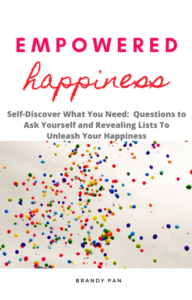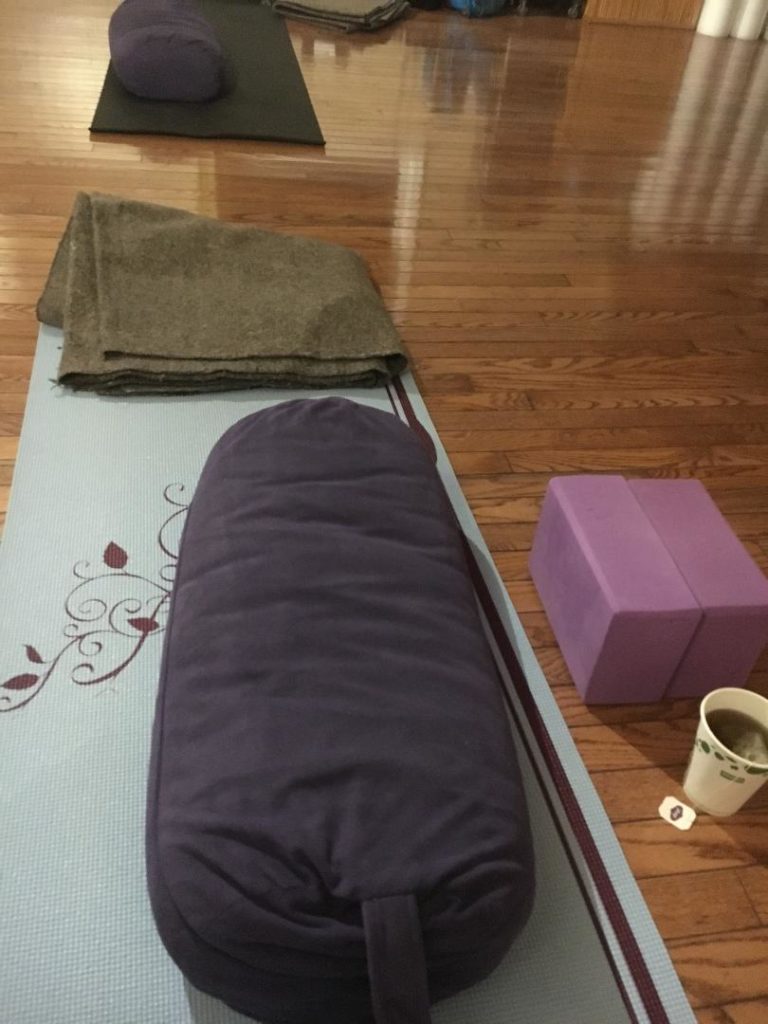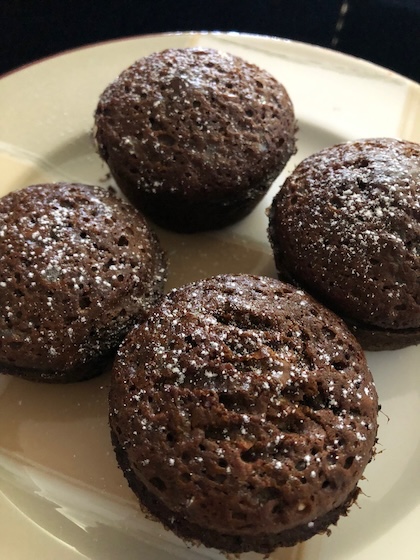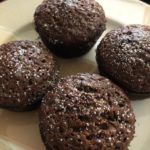Barre class can be a metaphor for what we need to grow ourselves. When you think of a row of ballerinas with their arabesques, port de bras, and extended swan necks, you can be reminded of control and grace–what we all need in life for better performance and balance.
You can also grow strong. When you have control over your body in a certain position, your muscles are flexing to build strength.
Don’t be fooled with thin and dainty ballerinas as they have very strong legs (and toes)! They’re usually slender, have Vata-like bodies where they are aware of every body position from the waist down to the crown of their heads and through their fingertips.
To get in perfect positions, they have concentrated mind-body awareness. If they lose focus then they could soon fall or be out of alignment.
If you aspire to have ballerina moves, that usually requires hours of imperfect practice. A Nutcracker play ballerina has paid their dues.
To start, you can make your life easy and see how the barre concept feels especially if you’re new, by trying a mild, less-strenuous workout in a barre class.
You usually start off standing along a bar as your equipment. And if you’re doing this from home, you can use a chair. It’s that simple!
One of the first things you want to think of is extended height. That requires stamina and strong legs and specifically upper leg strength in your quadricep muscles (quads) that could give you the endurance you need.
That’s not something you develop overnight, but you may be naturally more built out in that area. That’s the opposite of someone who wants to try-out for America’s Ninja Warrior show. There you see athletic men and women alike on the show who have demonstrated strong upper body strength. We’re all given different strengths in comparison.
And ballerinas are athletes, with strong quads. Like everyone else, you can develop your legs in other ways every day. Like, climbing stairs or doing squats in place. And say you want to take an outdoor 20 plus mile bike ride, having strong upper leg muscles will help give you the extra strength and extra oomph to push you over the hills.
A great way to develop your quads is by following a barre class.
If you take a class, that can be just as effective through video, you can lose your inhibition. You’re focused on your screen and mimicking the instructor and not thinking how silly you look with self-consciousness and awkward body movements (that we all have).
Your body doesn’t care how ridiculous you can look to move its joints, muscles, and all the parts gluing your butterfly parts together. It’s just happy you’re moving and that’s what you can positively focus on.
Similar to learning foundational yoga poses for a yoga class, you can learn and focus your attention on ballet positions for a barre class.
You can even find that you’ve known or been doing some of the French named barre positions for years without knowing how that they would be practical in your barre class now.
What I love most about barre class:
I do think barre is a Vata-designed workout. ♥ ♥
A Vata person’s middle name is Variety.
Choosing to take a barre class is a variety from the norm while the type of exercise is growing in popularity. The crux of the class can be ballet moves, but most barre classes incorporate moving to the floor for pilates and yoga poses.
You just never know what kind of journey your barre instructor can take you on and how intense the workout is until you get a sense of the instructor’s style.
If that unknown element of what-happens-next appeals to you, then you may have a ‘lil more Vata in you than you think (we all have some trace).
If in your recreational time, you still like to know every move you’ll be taking and that’s expected, then you could be more Pitta/Kapha dominant or falling into those stronger imbalances.
In any case, life is full of surprises so taking a barre class can help you become flexible.
By the way, do you know what your main dosha is?
If you want to know the reverse, what is not happening the way you want, then you can take the balance restoration, Body Balance Quiz, to find out what you can do to get back to yourself.
If you pay attention and learn to get in awareness of your natural body tendencies, then you can lean into your ways and not be so hard on yourself. We can wonder why we’re different in some ways from our friends and people we admire.
Doshas may be one insightful clue and a more fun way (leaning into your natural strengths) to follow in life.
Be encouraged, many others share your mind-body type. You just have to find your peeps. They’re out there!
But back to barre… whether you’re a natural Vata body-mind type or not, you get a mix of a heart-pumping workout with very few breaks to catch your breath, unlike these peeps just standing around. …sorry, Easter is in a couple weeks, so I couldn’t resist the reference!
One class I went to regularly for a season had exercises where you moved from one end of the room to the other, mimicking a Nutcracker Toy Solder.
Repeating the movement takes body coordination and also self-discipline, as you’re trying to look cookie-cutter mechanical. Concentration is good mind-body health (and can help a Vata-sporadic brain get back in line).
Making even-movements is a talent that I don’t have today (maybe you do and could consider trying-out for the Rockettes!), but whatever the case you still can have your best-attempt version.
In that one class, we learned how to march across a room with our stiff arm and leg movements, and afterward we each picked up a stability ball for an even more energizing workout.
We transformed from gliding Ballerinas to marching Toy Soldiers to Downward-Facing Dogs. …Phew! I was tired.
So next time you’re wondering if you should give barre a try, here are few surprise benefits that can help sway you:
-Increasing mind-body awareness
-Developing grace and better performance
-Building strength and resilience
-Finding self-discipline and self-control (that leads to bigger and better things!)
And if you can’t dance, barre is a good alternative to say Zumba, as you’ll still be on your toes and you may just become a ‘lil more aware which is the right, left foot 😊










